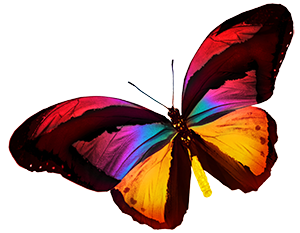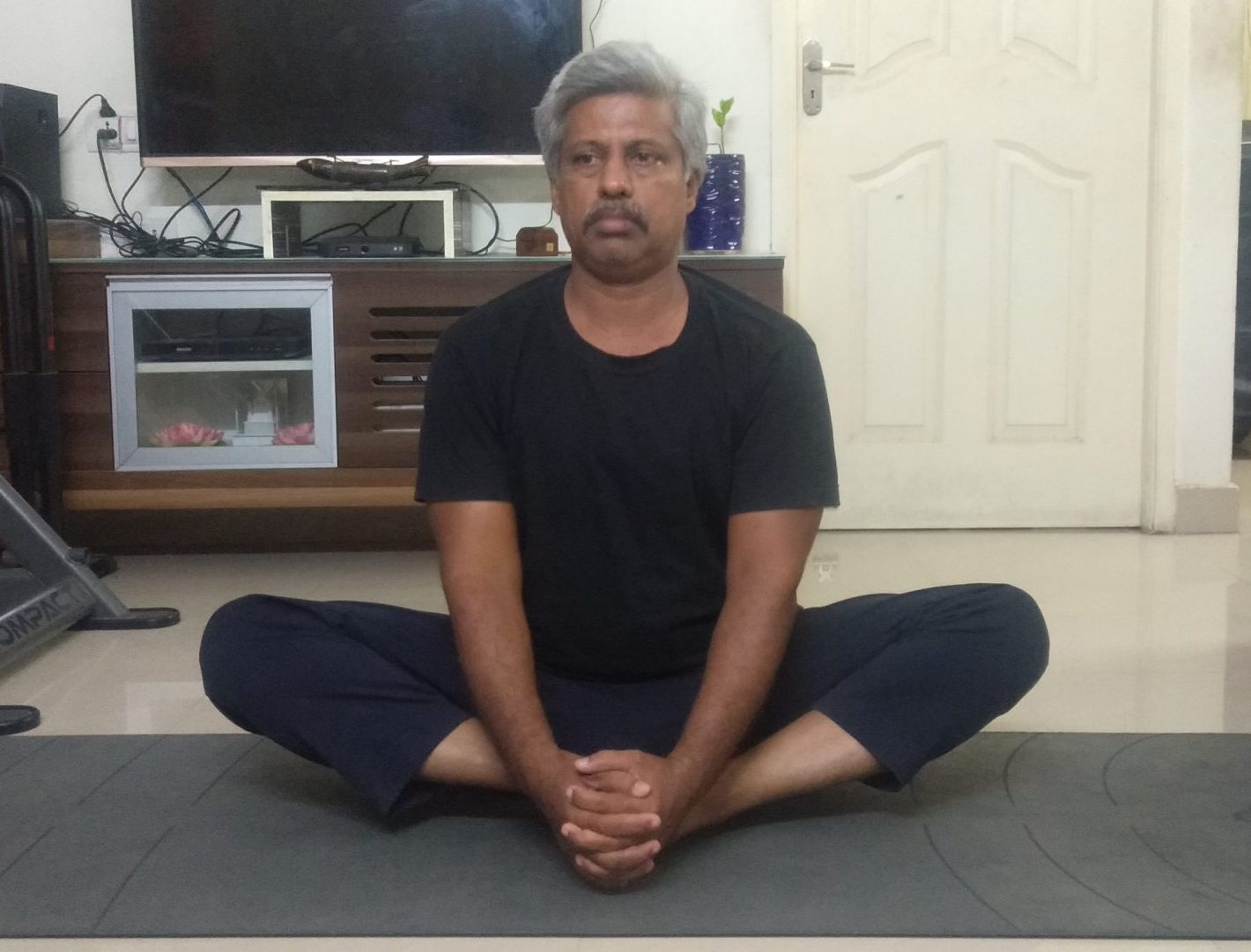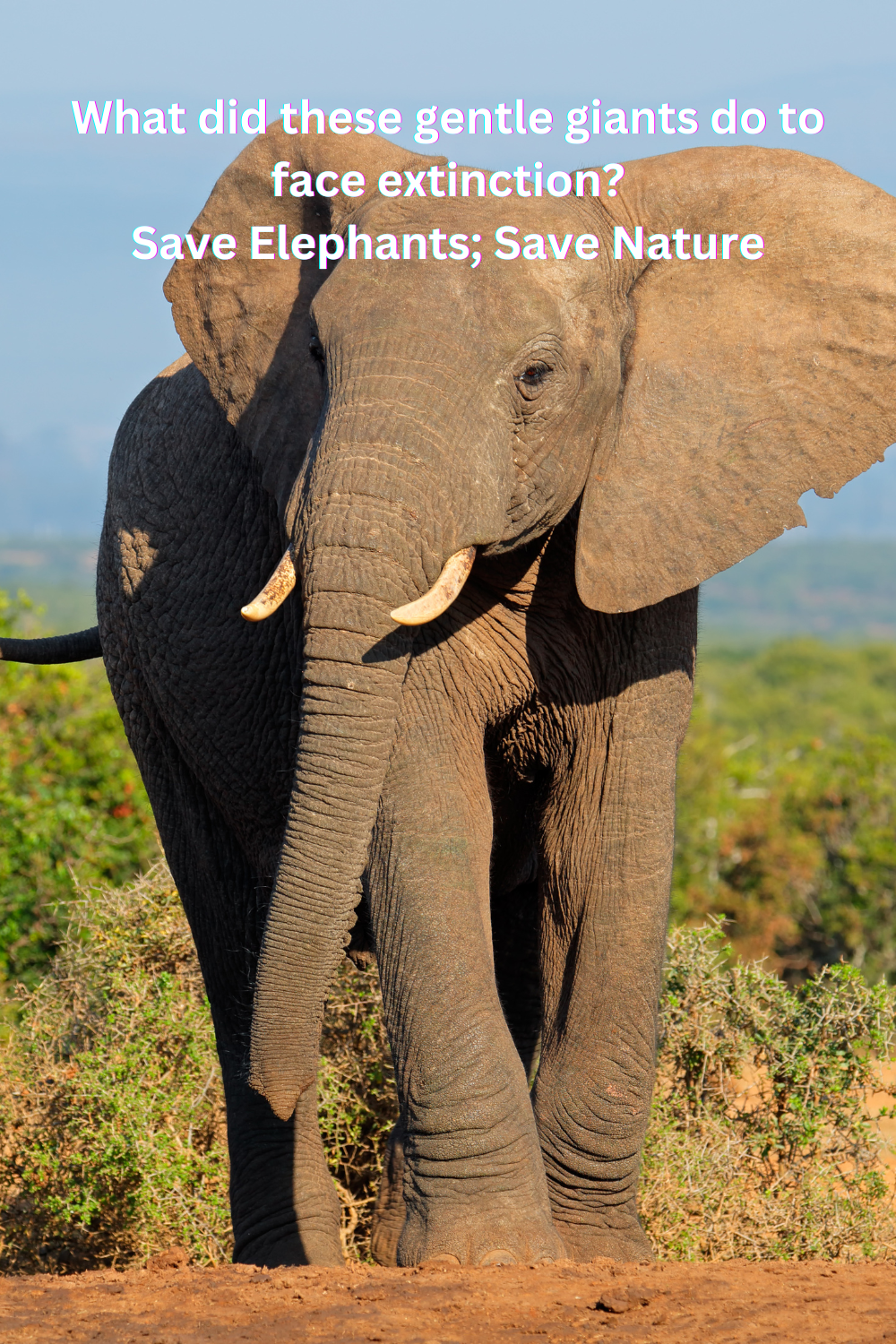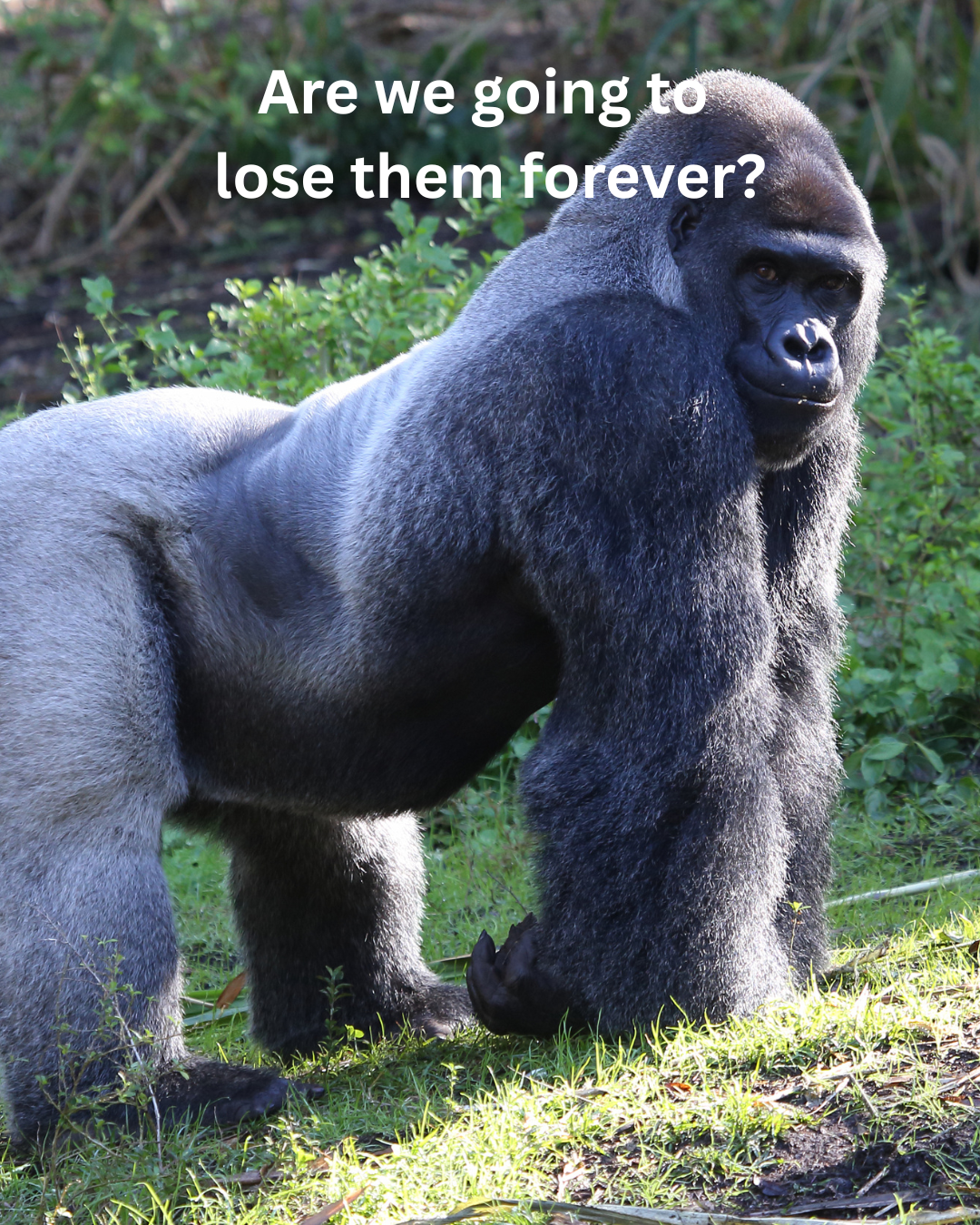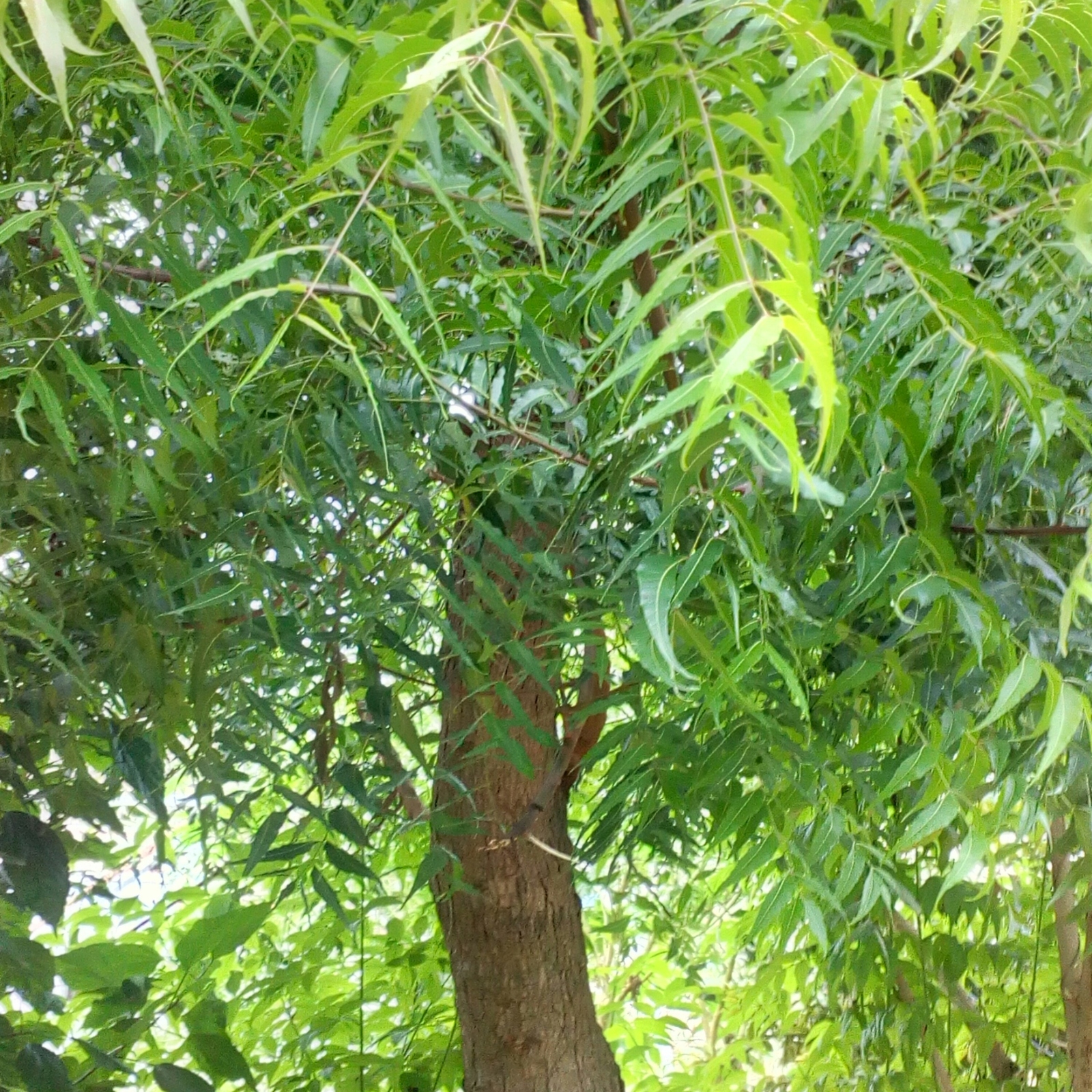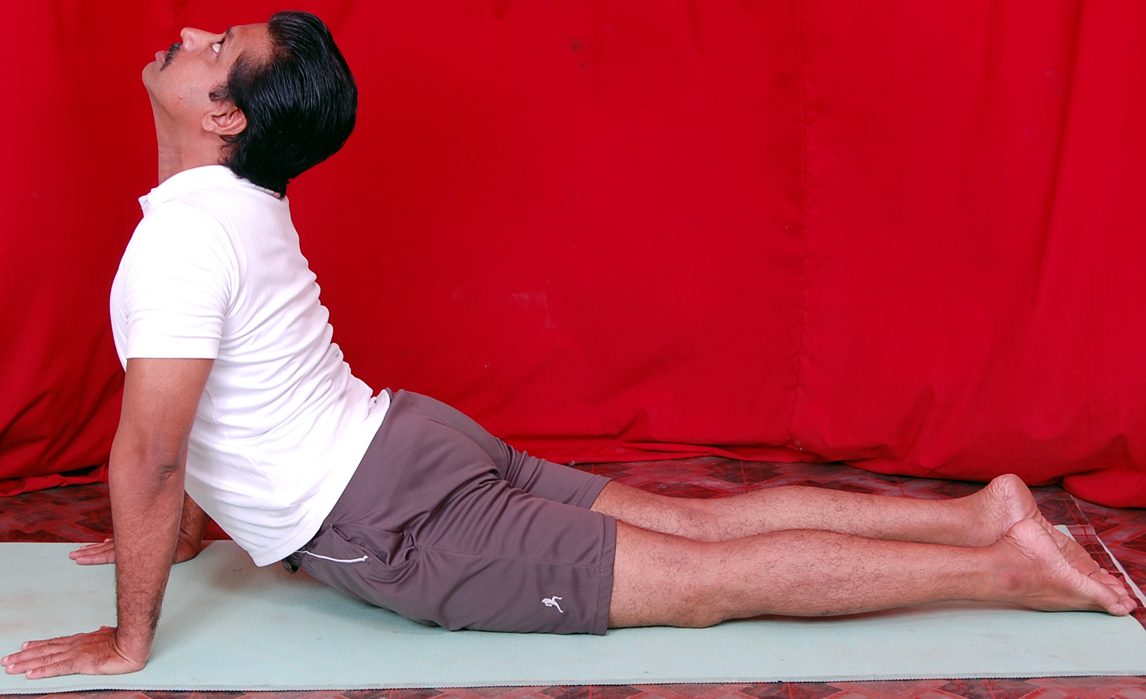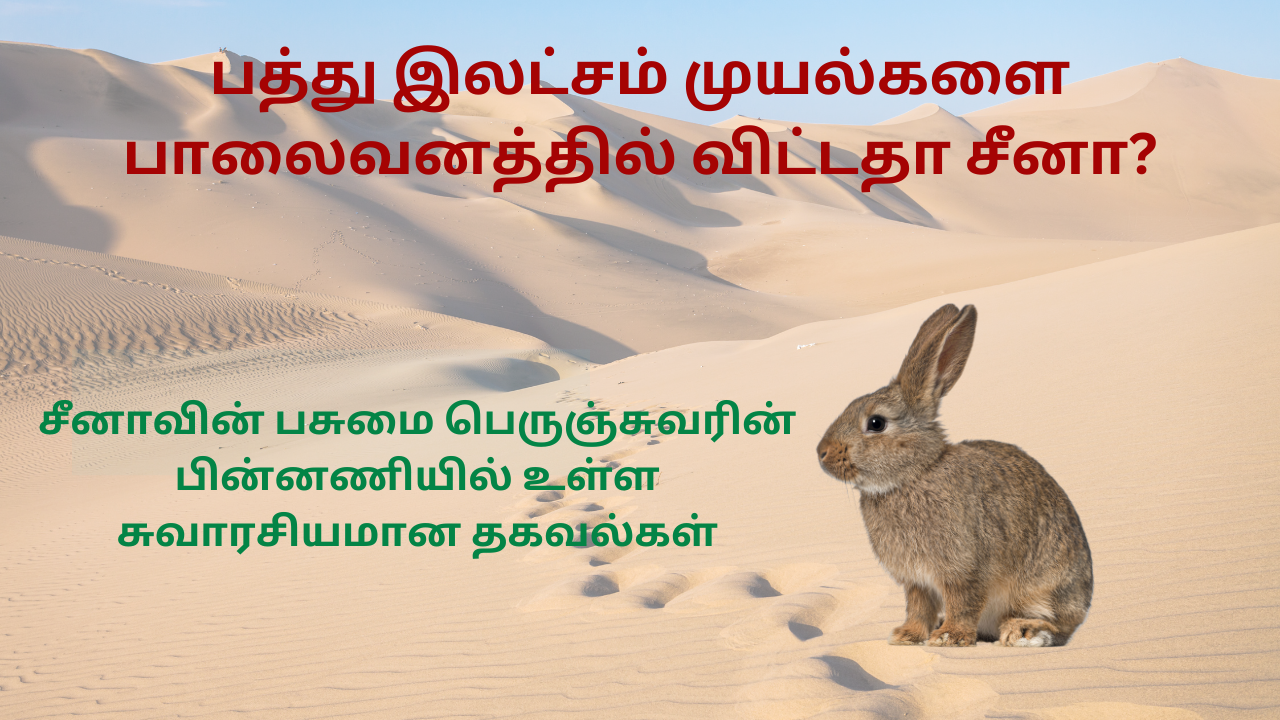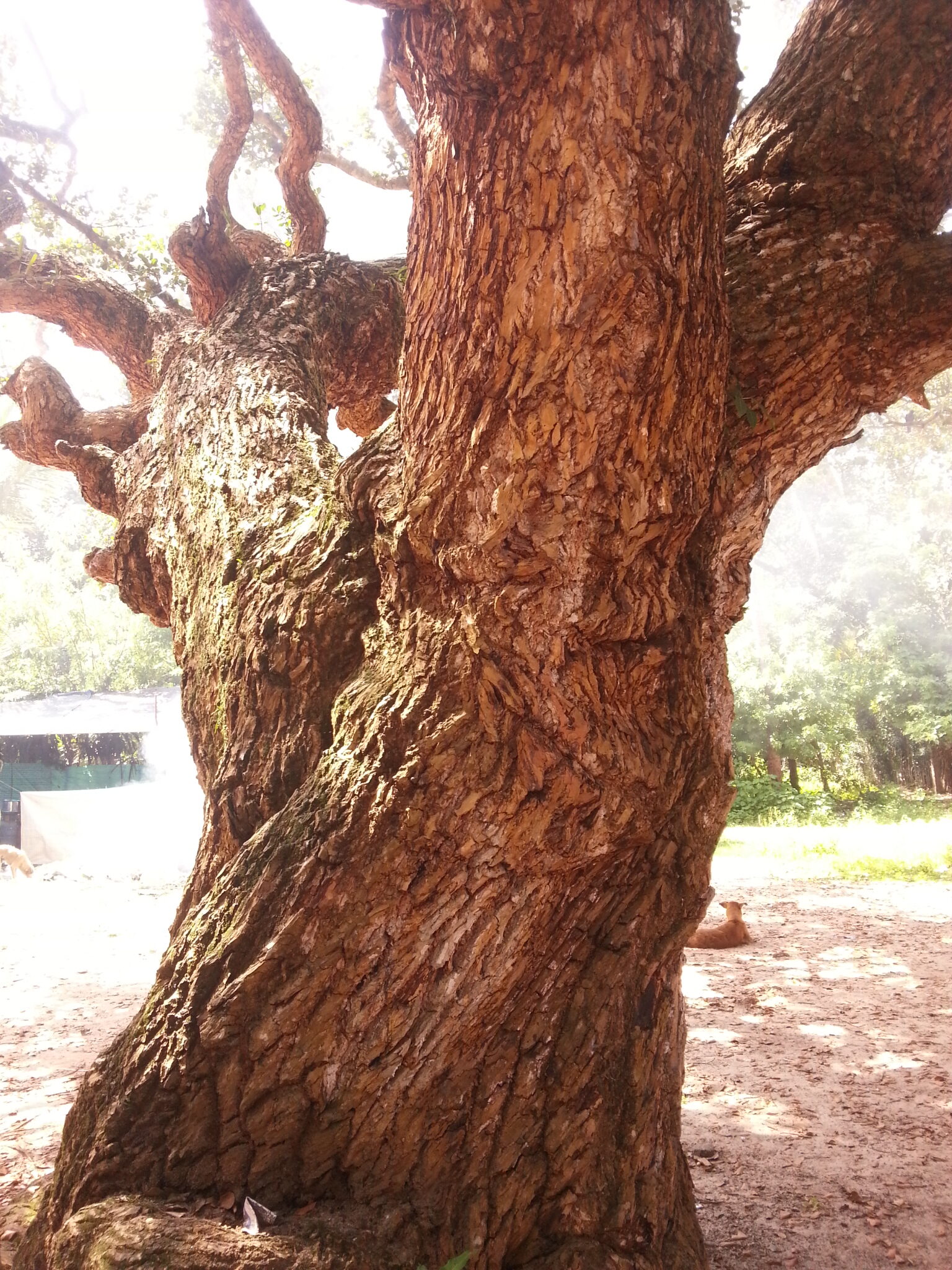‘Baddha’ in Sanskrit means ‘bound’ and ‘kona’ means ‘angle’. This pose is also known as Butterfly Pose and Cobbler’s Pose.
Bound Angle Pose stimulates Root chakra and Sacral chakra. Hence, the pose promotes stability and sense of safety. It promotes creativity and determination. Bound Angle Pose is also effective in making the mind mature.
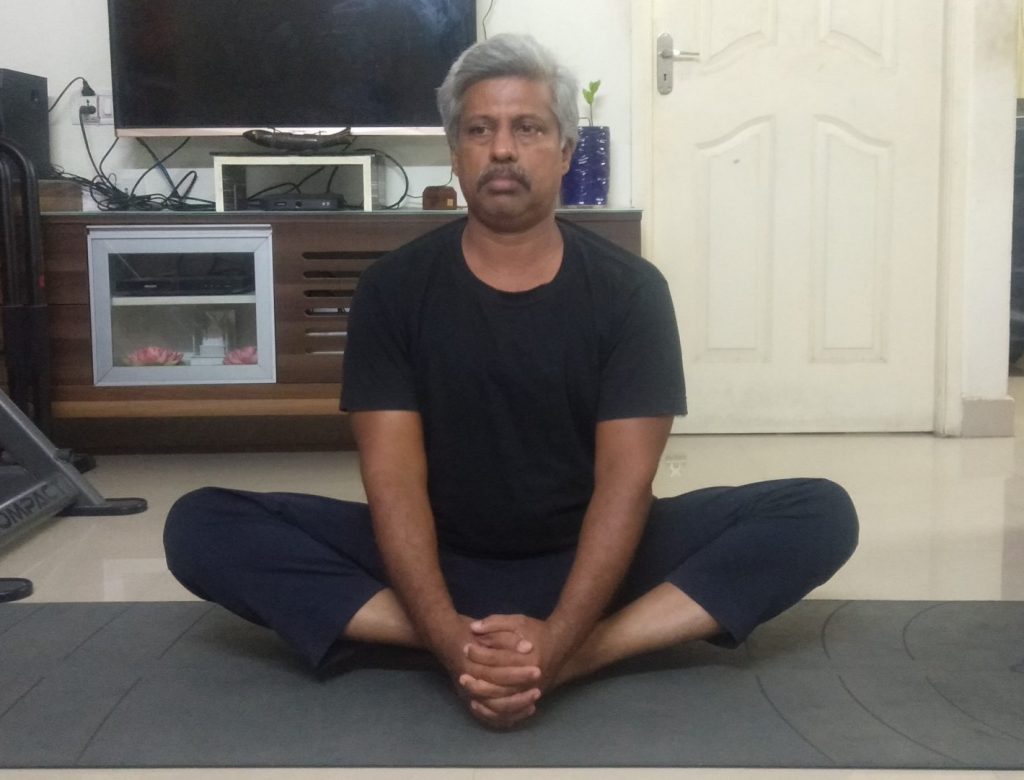
Other Benefits of Bound Angle Pose
- The pose strengthens lungs.
- It stretches the hips.
- Practicing the pose helps to stretch the spine.
- It is an effective yoga pose for promoting functions of nervous system.
- The pose stretches the thighs and knees.
Step-by-Step Guide
- Sit down on the mat.
- Bend your legs and place the feet against each other. Hold the toes with your hands. Your knees should be on the sides.
- Inhale and sit tall.
- Hold the pose for 20 seconds.
Note
Though the pose strengthens hips and knees, those with severe hip and knee problems should refrain from practicing the pose.
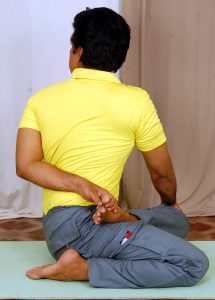
Yoga Pose for Day 43 – Bharadvaja’s Twist (Bharadvajasana)
Bharadvaja’s Twist is named after the sage Bharadvaja. This seated yoga pose stimulates Root chakra and Heart chakra. Proper functioning of Root chakra promotes sense of safety. Effective functioning of Heart chakra
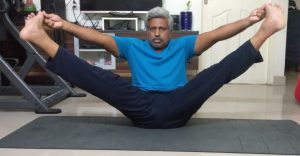
Yoga Pose for Day 41 – Upward Seated Angle Pose (Urdhva Upavistha Konasana)
In one of our recent posts, we have written about Half Upright Seated Angle Pose, in which one leg will be lifted upwards. In Upward Seated Angle Pose both legs should be lifted sideways. ‘Urdhva’ in
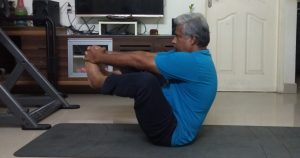
Yoga Pose for Day 40 – Balancing Bound Angle Pose (Dandayamana Baddha Konasana)
‘Danda’ in Sanskrit means ‘stick’, ‘yamana’ means ‘balance’ or ‘control’, ‘badhha’ means ‘bound’ and ‘kona’ means ‘angle’. In this pose, the legs are bound by the hands and the body is balanced by buttocks and hence
